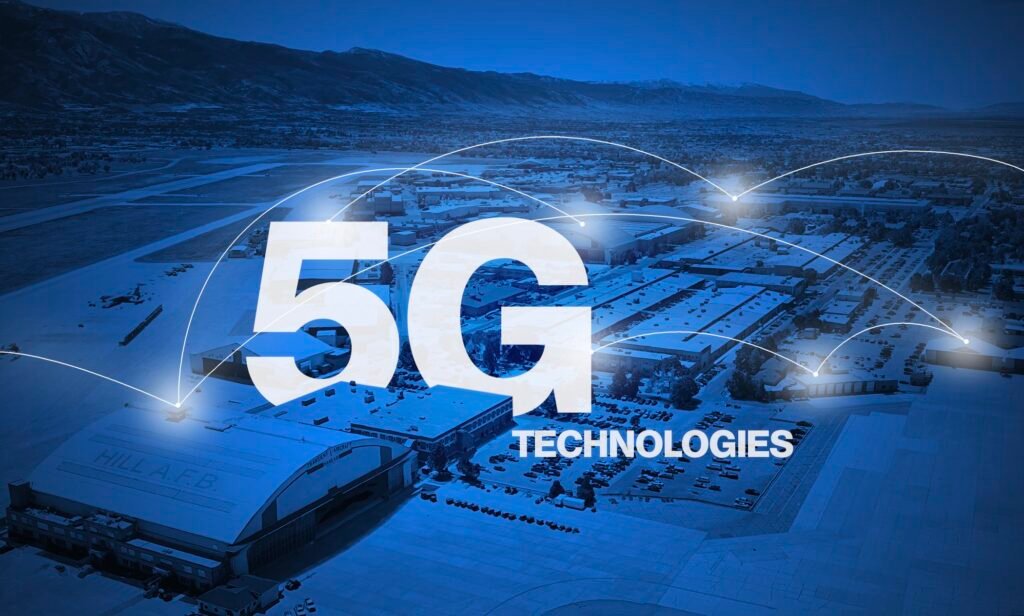Understanding 5G Technology
5G Technology: Facts, Health Effects, and Safety: 5G technology represents the fifth generation of mobile networks, distinguished by its enhanced performance metrics compared to its predecessors—3G and 4G. The foundational principle of 5G lies in its ability to deliver significantly higher data rates, reduced latency, and improved capacity for simultaneous device connections. 4G networks typically support speeds up to 1 Gbps, 5G has the potential to reach speeds exceeding 10 Gbps, enabling a more efficient and responsive user experience, particularly for data-heavy applications.
One of the notable advancements of 5G is its capacity for ultra-low latency, meaning the lag time between sending and receiving data is dramatically minimized. This is particularly beneficial for applications requiring real-time interactions, such as autonomous driving, remote surgeries in healthcare, and various applications in the Internet of Things (IoT). Regarding connectivity, 5G networks can support millions of devices per square kilometer, promoting the development of smart cities where connectivity is ubiquitous and integrated.
The Backbone of 5G: Small Cells and Fiber Optics
The infrastructure needed to support 5G is fundamentally distinct from earlier generations. It primarily relies on a network of small cells, fiber optics, and advanced antenna configurations. Small cells, which are low-powered radio access nodes, are essential for increasing coverage and capacity. The deployment of dense networks of small cells is critical due to the higher frequency bands used by 5G, while offering more incredible speed, have a reduced range compared to the frequencies utilized in 4G. Fiber optics are crucial in connecting these small cells to the core network, ensuring the effective transmission of large data volumes.
The 5G Revolution: Transforming Industries
5G technology is poised to revolutionize various sectors, including telecommunications, healthcare, and innovative city initiatives. Enhanced connectivity supports developments in telehealth services, intelligent transportation systems, and new IoT applications that require reliable and fast data exchange. Understanding the complexities and applications of 5G is fundamental to grasping its potential impact on society and our daily lives.
Investigating Potential Health Effects of 5G

5G technology has sparked extensive discussions about its potential health effects. 5G networks use radiofrequency electromagnetic fields (EMFs) that differ from previous generations, with a wider frequency range and more base stations. These higher frequencies, ranging from 24 GHz to 100 GHz, have raised public concerns about their safety and biological impacts.
Health organizations and regulatory agencies have conducted numerous studies to assess the implications of exposure to these frequencies. The World Health Organization (WHO) classifies radiofrequency fields as possibly carcinogenic to humans (Group 2B), no direct link between mobile technology use or EMF exposure and adverse health effects has been established. We need more research to investigate the long-term effects of exposure to these frequencies.
The 5G Controversy: Balancing Scientific Evidence and Public Concerns
Public apprehensions have been met with mixed responses from experts within the scientific community. Some researchers emphasize the need for additional, comprehensive studies to address potential gaps in data, particularly regarding chronic exposure during sensitive developmental periods. Conversely, advocates of 5G technology argue that existing regulatory frameworks effectively protect public health, as they are designed to ensure safety standards based on extensive scientific evidence. The debate continues, reflecting varying interpretations of scientific findings and a broader necessity for public education on 5G’s implications.
Balancing these perspectives is essential for a nuanced understanding of 5G technology. It is crucial for ongoing research to address the existing uncertainty, thus enabling informed discussions regarding safety and public health about the increasing implementation of 5G networks.
Current Expert Opinions on 5G Safety
The introduction of 5G technology has sparked discussions among health professionals, scientists, and regulatory bodies concerning its safety. Numerous experts have weighed in, leading to a complex and often nuanced dialogue. The World Health Organization (WHO) acknowledges that research into the health effects of 5G is still in its early stages. WHO has stated that while higher frequencies used by 5G networks may increase exposure to electromagnetic fields (EMF). The levels emitted by 5G networks remain within international guidelines.
The Federal Communications Commission (FCC) has also maintained that 5G technology is safe for public use. Arguing that the radiation emitted from cell towers and devices complies with existing safety standards. This stance is echoed by various scientists. Who assert that current research does not provide substantial or conclusive evidence of harmful effects specifically linked to 5G exposure. Experts express caution. Emphasizing the necessity for continued research to fully understand the long-term health implications of regular exposure to 5G radiation.
Prioritizing Safety in the 5G Era
Safety guidelines take center stage among experts advocating for precautionary principles. Many experts argue for active monitoring of ongoing research to adjust safety regulations as needed. Regulatory bodies strongly recommend preventive measures to minimize unnecessary exposure for vulnerable populations, especially children. However, a consensus within the scientific community remains elusive. The discourse reflects a commitment to embrace technological advancement while prioritizing public health. As research evolves and our understanding of 5G exposure grows, expert opinions are likely to change. Health authorities maintain a cautiously optimistic stance, but they stress the need for vigilance in public health policy and ongoing scientific inquiry
Public Concerns and Misinformation about 5G
5G technology rollout has sparked significant public debate, largely fueled by concerns and misinformation about potential health risks. Many people fear that 5G may cause health problems, especially radiation-related illnesses. Misinformation spread on social media has worsened these worries.
Studies and expert analyses from organizations like the WHO show that 5G radiofrequency electromagnetic fields are safe. Despite these reassurances, sensational headlines and conspiracy theories have hindered public understanding and acceptance of 5G technology.
5G: Dispelling Myths and Promoting Understanding
Efforts to educate the public are crucial for dispelling myths and clarifying the safety of 5G technology. Engaging credible sources such as scientific communities, health organizations, and government agencies can effectively counter misinformation. Community outreach programs with forums for discussion and informational sessions can empower individuals with knowledge. Allowing them to form opinions based on facts rather than hearsay. Bridging the gap between scientific evidence and public understanding is vital for successfully integrating 5G technology into everyday life.
5G: The Next Generation of Wireless Technology
5G, the fifth generation of wireless technology, is revolutionizing the way we connect and communicate. It offers significantly faster speeds, lower latency, and greater capacity than previous generations, enabling a wide range of new applications and services.
Key Features of 5G:
- Higher Speeds: 5G networks can deliver significantly faster download and upload speeds, allowing for seamless streaming of high-definition video, faster file transfers, and more.
- Lower Latency: 5G reduces latency, the time it takes for data to travel between devices. This enables real-time applications like remote surgery, autonomous vehicles, and virtual reality experiences.
- Increased Capacity: 5G can handle more devices and data traffic simultaneously, making it ideal for crowded urban areas and IoT applications.
Benefits of 5G:
- Enhanced Mobile Experience: Faster downloads, smoother streaming, and less buffering.
- IoT Revolution: Enables the widespread deployment of IoT devices, leading to smart homes, cities, and industries.
- Remote Work and Learning: Facilitates remote work and online education with high-quality video conferencing and remote collaboration tools.
- Healthcare Innovations: Enables remote patient monitoring, telemedicine, and other healthcare advancements.
- Autonomous Vehicles: Supports the development of self-driving cars and trucks, improving transportation efficiency and safety.
While 5G offers numerous benefits, it’s important to address concerns about potential health impacts and privacy issues. Ongoing research and stringent regulations are essential to ensure the safe and responsible deployment of this technology.


